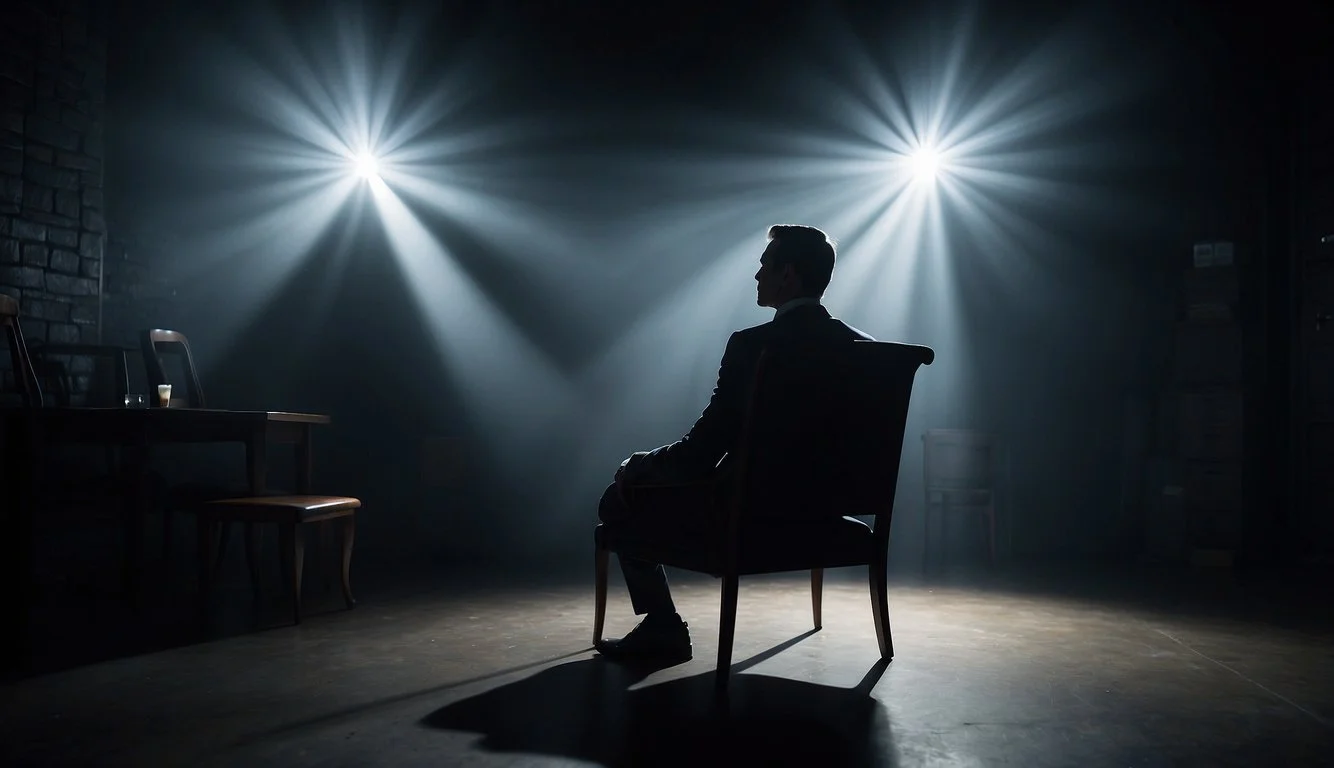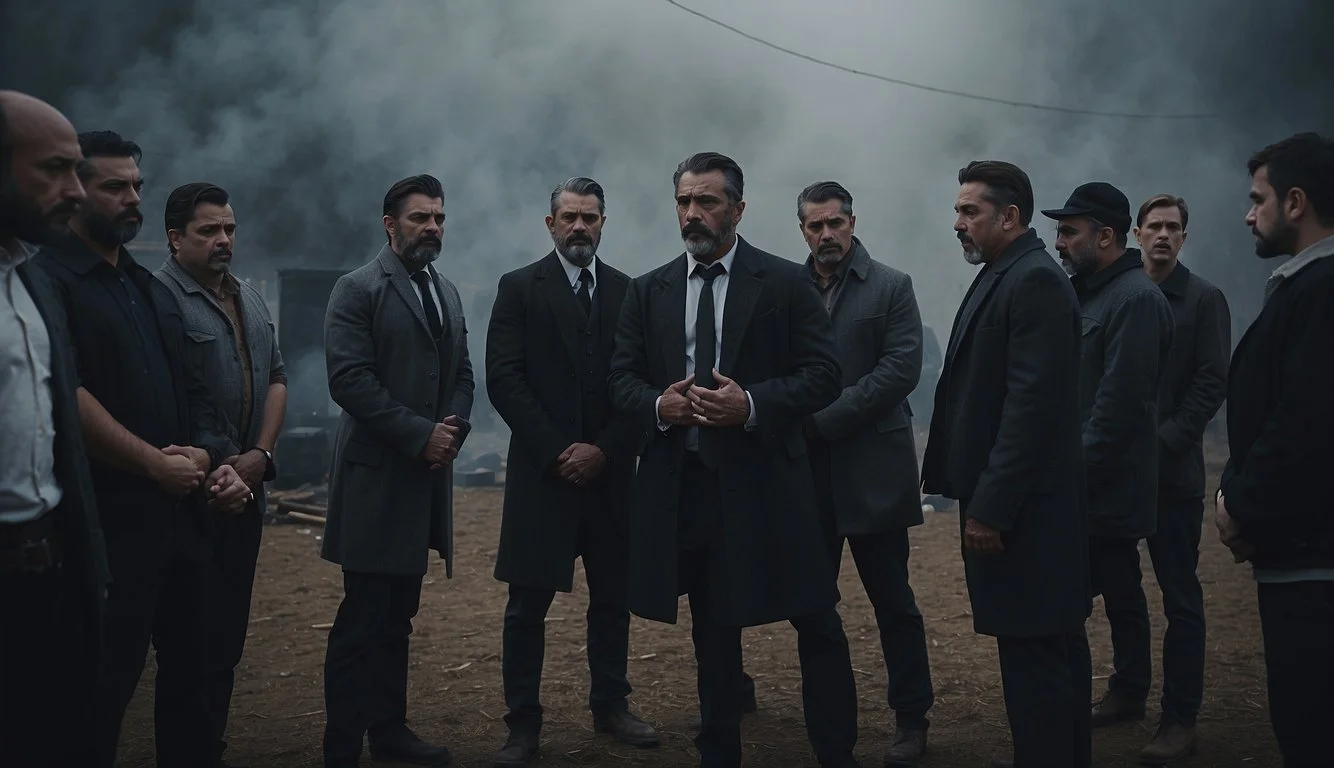Documentary Review: The Act of Killing (2012)
A Chilling Exploration of Human Atrocity
Joshua Oppenheimer’s 2012 documentary, The Act of Killing, presents a chilling exploration of Indonesia's dark history. By inviting former death squad leaders to reenact their crimes, the film provides a unique window into the psyche of these individuals and the brutal anti-Communist purge that took place in 1965-66. This bold approach reveals not just the events of the past, but the ongoing impacts on both the perpetrators and society at large.
The film’s raw depiction of mass murder and impunity has struck a nerve with audiences and critics alike. Oppenheimer’s method of allowing the killers to direct their own dramatizations adds a surreal and often horrifying layer to the narrative, compelling viewers to confront uncomfortable truths about human cruelty and denial. This technique serves to humanize the villains, making the horrors they committed even more unsettling.
Reactions to The Act of Killing have been strong, with many praising its originality and bravery. The surreal reenactments, combined with interviews, create a powerful and unforgettable documentary experience. From its powerful imagery to its thought-provoking content, this film forces viewers to question the nature of morality and justice in a world where history's darkest moments are often swept under the rug.
Background of 'The Act of Killing'
The Act of Killing is a 2012 experimental documentary directed by Joshua Oppenheimer, with Christine Cynn and an anonymous Indonesian co-director. The film addresses the Indonesian mass killings of 1965-66, during which alleged communists and opponents of the New Order regime were systematically tortured and executed.
Approximately one million people lost their lives during these violent purges. The documentary follows the perpetrators, now living freely, as they reenact their brutal acts for the camera. This unusual narrative approach helps to reveal the impact of their actions and the lingering trauma within Indonesian society.
Key Figures
Joshua Oppenheimer: Director
Christine Cynn: Co-director
Anonymous Indonesian co-director: Co-director
These reenactments are not just historical recounts but also provide a platform for the perpetrators to confront their pasts. Anwar Congo, a prominent figure in the documentary, portrays his role in the atrocities.
The film has received acclaim for its raw and unsettling portrayal of a dark chapter in history. Its innovative method of storytelling, through the reenactment by the actual perpetrators, offers an unprecedented perspective on the impact of mass violence.
Available on popular streaming platforms like Fandango at Home, Prime Video, and Apple TV, The Act of Killing has sparked discussions on historical memory, impunity, and justice. Its powerful narrative forces viewers to grapple with the human capacity for cruelty and the complexities of reconciling with the past.
Director's Perspective
Joshua Oppenheimer's "The Act of Killing" is a groundbreaking documentary, offering a unique view into Indonesia's dark history through the lens of its perpetrators. His vision and innovative storytelling methods provide a stark and powerful narrative that challenges traditional documentary filmmaking.
Joshua Oppenheimer's Vision
Joshua Oppenheimer directed The Act of Killing to confront viewers with the horrifying reality of the Indonesian mass killings that took place in 1965-66. By allowing the perpetrators to reenact their crimes, he aimed to expose the banality and brutality of violence. Oppenheimer's approach is both provocative and revealing, compelling audiences to face uncomfortable truths about human nature and the impact of unchecked power.
His vision was to reveal how these killers saw themselves and to explore the psychological mechanisms that allowed them to rationalize their actions. He used the perpetrators' own narratives and fantasies to illustrate a complicated picture of guilt, denial, and self-aggrandizement. This method aimed to generate not just awareness, but also empathy and introspection in the audience.
Innovative Storytelling Methods
Oppenheimer's storytelling methods in The Act of Killing are particularly innovative. He invited the killers to dramatize their memories, blending documentary and fiction. This created a surreal, often horrifyingly honest portrayal that departed from conventional documentary techniques, which typically rely on interviews and archival footage.
Using fictional reenactments, the film explores the inner lives of these criminals in a way that traditional formats cannot. The killers' willingness to participate and even boast about their past deeds adds layers of complexity and discomfort to the viewing experience. This method also highlights the surreal disconnection between their perceptions and the reality of their actions.
The film's powerful visual style—ranging from crude dramatizations to elaborate, symbolic scenes—serves to heighten its emotional impact. Oppenheimer's choice to allow these reenactments places viewers directly into the psyche of the perpetrators, making the horror of their actions disturbingly clear and personal.
Synopsis of the Documentary
The Act of Killing, directed by Joshua Oppenheimer, delves into a harrowing chapter of Indonesian history.
The film centers on the Indonesian mass killings of 1965-66. During this period, alleged communists and those opposed to the ruling regime were tortured and executed. More than one million people were killed in this anti-Communist purge.
What sets this documentary apart is its approach. Oppenheimer gives the perpetrators a unique opportunity—they recreate their past atrocities through various film genres. These reinterpretations include gangster films, westerns, and musical numbers.
The main subjects are former death squad leaders, including Anwar Congo and Adi Zulkadry. Congo, in particular, grapples with his past deeds, leading to intense and revealing moments on screen.
This blending of reality and dramatization unveils the twisted justifications these men use to cope with their actions. The documentary presents a chilling exploration of memory, guilt, and the human capacity for cruelty.
The Act of Killing has received critical acclaim. It was shortlisted for a 2014 Academy Award nomination for Best Documentary. Its raw and unsettling portrayal makes it a powerful piece of cinema.
By combining interviews and dramatized recreations, it confronts viewers with the brutal realities of the mass killings. The film's innovative technique challenges the conventional boundaries of documentary filmmaking.
Critical Examination
The Act of Killing employs a unique narrative structure and a distinctive visual style. The interview techniques raise important ethical considerations.
Narrative Structure Analysis
The Act of Killing uses a non-linear narrative, focusing on reenactments performed by the perpetrators of the Indonesian genocide. This structure juxtaposes their past actions with their current lives, emphasizing the lack of remorse.
Scenes often shift between surreal reenactments and candid moments. This technique blurs the lines between reality and performance, compelling viewers to confront the horror of the events depicted. The choice to give perpetrators a platform to recount their stories in their own terms challenges traditional documentary storytelling.
Cinematography and Visual Style
Cinematography in The Act of Killing is vivid and unsettling. The reenactments are meticulously staged, employing dramatic lighting and unusual camera angles, which create a surreal and often jarring visual experience.
The film's visual style enhances the psychological impact. For example, scenes set in vibrant locations contrast sharply with the grim content, reflecting the dissonance between the appearance and reality of the perpetrators' lives. This use of contrast intensifies viewers' emotional responses and deepens engagement with the narrative.
Interview Techniques and Their Ethical Implications
Joshua Oppenheimer's interview technique involves allowing perpetrators to narrate and even dramatize their actions. This raises significant ethical questions. By providing a platform for the perpetrators, the documentary risks appearing as if it were giving them unwarranted legitimacy.
However, this method exposes their mindsets and lack of remorse, offering insights into the psychological depth of their crimes. It lays bare the impunity and normalization of violence that persists. The ethical implications are complex, but the approach is integral to the documentary's effectiveness, providing a stark, unfiltered look at the banality of evil.
Historical Context
Joshua Oppenheimer's The Act of Killing highlights the harrowing period of violence that gripped Indonesia in the mid-1960s and its enduring effects on society.
Indonesia's 1965-1966 Genocide
In 1965, Indonesia underwent a catastrophic anti-communist purge. Following an alleged coup attempt by the Communist Party, the Indonesian military, led by General Suharto, initiated a brutal crackdown. Approximately 500,000 to over a million suspected communists, ethnic Chinese, and intellectuals were slaughtered.
The killings were primarily carried out by paramilitary groups and gangster organizations. Anwar Congo, one of the massacre’s key executioners, features prominently in the documentary. This period marked a significant turning point in Indonesian history, leading to Suharto's rise to power and the establishment of his New Order regime.
Impact on Indonesian Society
The repercussions of the genocide remain palpable in Indonesia. Many perpetrators of the violence have not faced justice and are still celebrated as national heroes. These figures hold significant influence in local communities, which often leads to a culture of impunity.
The documentary captures the ongoing trauma experienced by survivors and the normalization of violence in society. This normalization is visibly embedded in aspects of Indonesian culture and politics, echoing the past atrocities and highlighting a nation's struggle to reconcile its history. The film's re-enactments expose these harsh realities, demonstrating the power of memory and the complexities of confronting historical violence.
International Reception
"The Act of Killing" (2012) received broad international attention, provoking strong reactions among critics, industry professionals, and audiences for its unique approach to documentary filmmaking and its subject matter.
Critics' Reviews
Critics have widely praised "The Act of Killing" for its groundbreaking narrative. Roger Ebert highlighted how the film confronts viewers with mass murderers unrepentantly recounting their deeds, making it a powerful exploration of human cruelty.
Variety called it a "blood-boiling" look at unpunished crimes. Rotten Tomatoes features glowing reviews, with some calling it the most original cinematic work of its year.
Awards and Acknowledgments
The film garnered numerous accolades, signifying its global impact. It was shortlisted for an Academy Award nomination for Best Documentary in 2014.
"The Act of Killing" won several awards, including the BAFTA for Best Documentary and the Asia Pacific Screen Award for Best Documentary. These honors reflect the film’s capacity to challenge and engage international audiences.
Audience Response
Reactions from audiences were intense and varied. Some viewers were deeply moved, reflecting on the chilling realities depicted. Others found the film's approach provocative and disturbing.
Discussions on social media and forums showed a mix of praise and discomfort. The film's raw portrayal of history incited debates on morality, memory, and justice. This range of audience responses indicates the film’s powerful effect on a diverse global viewership.
Themes and Symbolism
Trauma and Memory
The documentary delves into the psychological impact on the perpetrators of the Indonesian genocide. Anwar, the main subject, shows signs of trauma, indicating that their actions have left deep psychological scars. This theme is crucial for understanding how these individuals live with their past.
The film powerfully portrays the moral ambiguity surrounding the perpetrators' actions. These men are not remorseful; instead, they see themselves as heroes. By giving them the stage to reenact their crimes, the documentary exposes the disturbing justifications they use to absolve themselves.
Role of Film and Reenactment
Film and reenactment play a unique role, as the perpetrators use these tools to recreate their violent acts. This method reveals their perceptions and serves as a form of psychological exploration. The reenactments become a medium through which their distorted views of righteousness and heroism are starkly displayed.
Symbolism of Everyday Life
The blending of everyday activities with discussions of mass murder highlights a terrifying normalization of violence. The gangsters live lives of comfort and affluence, symbolized by remarks such as living a life of "relax and Rolex," which starkly contrasts with the gravity of their past actions.
Surreal Imagery
Surreal and often bizarre imagery underscores the bizarre nature of the film. Scenes that juxtapose mundane settings with reenacted brutality serve to disorient and engage the viewer, compelling them to confront the twisted reality of the perpetrators' world.
The film acts as a bold historical reckoning by confronting a nation's unspoken atrocities. By interviewing the individuals responsible for the mass murders following Indonesia's 1965 military coup, the documentary forces a confrontation with the grim aspects of the country's history.
Each of these themes and symbols helps to construct a complex narrative that challenges viewers to question their own perceptions of history and morality.
Ethical Considerations in Documentary Filmmaking
Ethical considerations are crucial in documentary filmmaking. These considerations guide filmmakers in their interactions with participants and in how they present their stories.
Informed Consent: Filmmakers must ensure that participants are fully aware of the film's purpose and the potential consequences of their involvement.
Representation: Accurate portrayal of subjects is essential. Misrepresentation can lead to harm or perpetuate stereotypes.
Impact on Subjects: Consider the emotional and psychological effects on participants. Filmmakers hold a responsibility to minimize harm.
Objectivity vs. Advocacy: Filmmakers often balance between presenting unbiased facts and advocating for a particular viewpoint. This balance can influence the film's integrity.
Privacy: Respecting the privacy of subjects, particularly in vulnerable situations, is key. Documentaries should avoid intruding into personal lives without consent.
Social Impact: Filmmakers should be aware of the broader social implications of their work. Films can influence public opinion and policy.
Ethical standards help maintain trust between filmmakers and audiences, ensuring that stories are told responsibly and respectfully.
The Role of Memory and Testimony
Memory and testimony play pivotal roles in The Act of Killing. By allowing perpetrators to tell their stories, the documentary unveils the complex interplay between personal memory and historical narrative.
These testimonies reveal the conflicting ways in which the past is remembered. The perpetrators recount their actions with a mixture of pride, guilt, and denial.
The documentary captures these moments to highlight the subjectivity of memory. This subjectivity raises questions about how historical events are recorded and remembered.
Through their reenactments, the perpetrators provide insight into their own justifications. These dramatizations serve as both confessions and self-examinations, blurring the lines between reality and performance.
This cinematic technique underscores the power dynamics involved in remembering trauma. Survivors' voices are notably absent, emphasizing the imbalance in who gets to tell the story.
The film's use of testimony challenges viewers to reconsider how history is constructed. By focusing on the firsthand accounts of the perpetrators, it undermines official narratives and encourages a more critical examination of the past.
In conclusion, The Act of Killing demonstrates the role of memory and testimony in shaping our understanding of history. The film's innovative approach provides an unsettling but necessary account of how individuals and societies process collective trauma.
Influence on Contemporary Cinema and Culture
Oppenheimer's The Act of Killing has made significant waves in the realm of contemporary cinema and culture. Its innovative approach to documentary filmmaking, where perpetrators reenact their crimes, has pushed boundaries and influenced new narrative techniques.
This film's raw and unfiltered presentation of historical events has been a catalyst for discussions about ethical storytelling in documentaries. Filmmakers now grapple with the delicate balance of portraying trauma without exploiting it.
The movie's impact is evident in the way it has inspired other filmmakers to explore dark and complex themes with similar audacity. Documentaries addressing human rights violations and political atrocities have adopted more avant-garde and introspective methods since its release.
In culture, The Act of Killing has brought greater attention to the Indonesian genocide, an often overlooked chapter in world history. It has led to increased international scrutiny and discourse, prompting educational and political bodies to revisit and reassess historical narratives.
Moreover, the film has spurred conversations about the psychological impact of violence on perpetrators, not just victims. This shift in perspective has influenced both academic studies and media narratives.
In summary, The Act of Killing stands as a powerful example of how documentary cinema can influence both the artistic domain and societal consciousness. Its legacy is marked by an increased willingness to confront uncomfortable truths and a bold reimagining of documentary storytelling.
Concluding Thoughts
The Act of Killing (2012) presents a haunting exploration of Indonesia's past. Directed by Joshua Oppenheimer, the film uses reenactments by the perpetrators of the 1965-66 anti-communist purge. This approach reveals their disturbing lack of remorse and the societal acceptance of their actions.
Viewers witness the transformation and inner conflicts of Anwar Congo, a central figure in the film. His journey from boastful killer to a man grappling with guilt forms a powerful narrative arc. Oppenheimer's method exposes the complexities of memory and trauma.
The film's impact lies in its ability to confront viewers with uncomfortable truths. It challenges them to reflect on morality, justice, and the lingering effects of historical violence. The shocking interviews and reenactments highlight the blurred line between reality and performance.
The Act of Killing is an extraordinary documentary. It is visually compelling and emotionally resonant. Its unflinching look at one of the 20th century's most brutal episodes is both provocative and enlightening.






